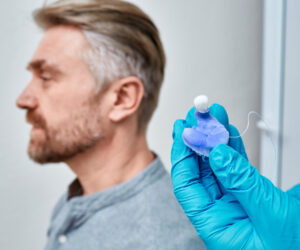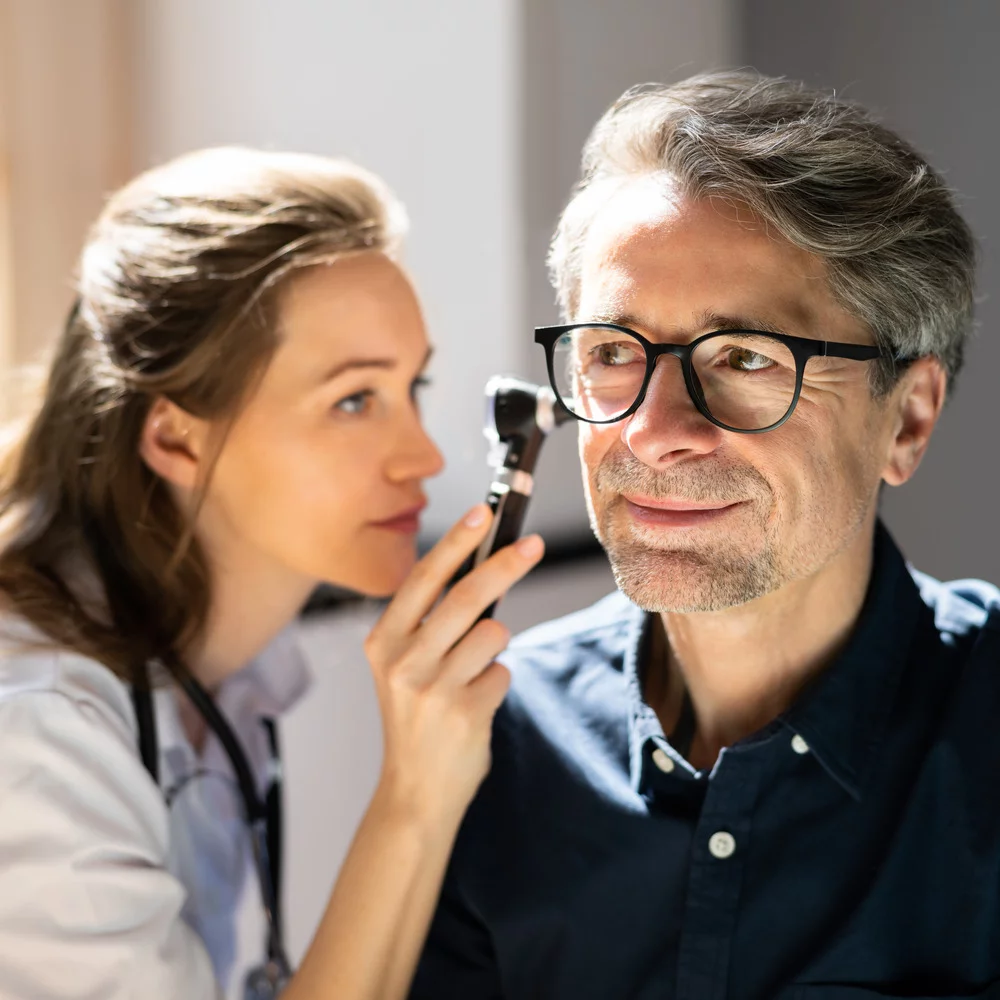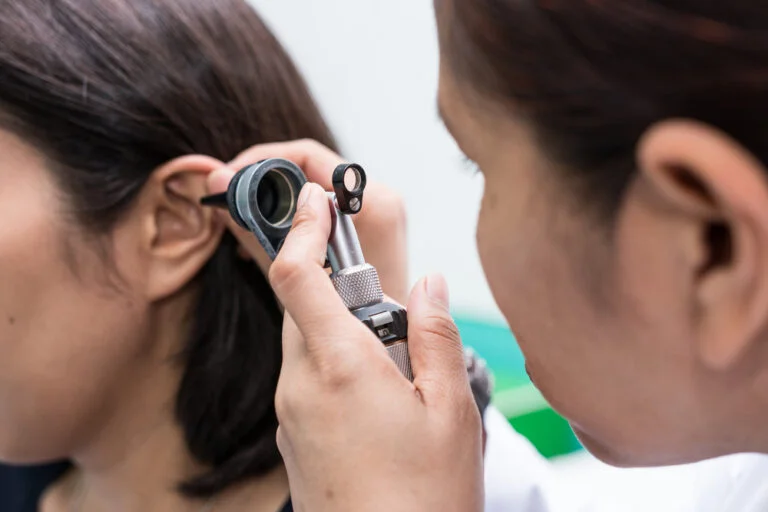
Ear Impressions: Everything You Need to Know
As a healthcare professional, have you ever considered the impact that being able to take ear impressions could have on your practice? Whether you’re an

If your hearing ability suddenly declines or you struggle to understand people, you might wonder whether it’s earwax buildup or a more serious issue like hearing loss. Many people mix up these symptoms, as earwax blockage and hearing loss can feel similar initially.
Understanding whether earwax or a more permanent type of hearing loss causes your hearing troubles helps you get the right help sooner.
The ear canal naturally produces earwax, or cerumen. It protects your ears by trapping dust, dirt, and other particles before they reach deeper parts of the ear. Earwax also lubricates the ear canal, keeping it moist and preventing irritation or dryness. It’s essentially the ear’s self-cleaning system – pretty impressive!
Earwax builds up for several reasons. Some people naturally produce more earwax, which leads to overproduction and blockages. Regular use of hearing aids or earplugs can push earwax deeper into the ear canal, preventing it from exiting naturally. Narrow or winding ear canals also make it harder for wax to move out, causing it to accumulate over time.
When earwax builds up, it can lead to a blockage that affects your hearing and overall comfort. The symptoms often include a feeling of fullness or pressure in the ear, discomfort, and ringing or buzzing sounds (tinnitus). Many people also notice temporary hearing loss when earwax is blocking the ear canal, making sounds seem quieter or far away.
Hearing loss can come in a few different forms, each with its own unique causes and characteristics:
Hearing loss can feel a bit different depending on the type and cause, but there are a few common symptoms to look out for. If you’re having trouble following conversations, especially in noisy places, that can be a sign. You might also notice needing to turn the TV volume up higher than usual or find that others sound unclear. Tinnitus, which is a ringing or buzzing sound in your ears, is another symptom that often accompanies hearing loss. Sometimes, people wonder whether their symptoms are from hearing loss or earwax buildup – both can cause hearing issues, but of course, they require different solutions.

The sensation of clogged ears and hearing loss can feel similar, but there are key differences in how you would experience them. When earwax causes a blockage, it typically leads to a sensation of fullness or pressure in the ear – almost like something is physically obstructing sound (which it is). This type of hearing issue is often accompanied by discomfort in the ear canal. Once the earwax is removed, the sense of relief and restored hearing is often immediate.
On the other hand, hearing loss tends to be more gradual and affects clarity rather than just volume. Instead of a blocked feeling, hearing loss is often associated with struggling to make out specific words, needing repetition, or losing high-pitched sounds like children’s voices. Unlike earwax, hearing loss does not cause a sensation of fullness, and there is no quick fix. The impact is more noticeable in understanding speech, especially in noisy settings, and it can affect both ears equally over time.
A visual examination of the patient’s ear with an otoscope will provide you with a view of any obstruction, inflammation, or abnormalities that might be affecting hearing. If a visible wax blockage is present, it’s likely the primary cause of the hearing issue, and removal can often restore hearing immediately.
If you find no significant earwax blockage during otoscopy, the next step should be an in-depth hearing test. This is particularly important if the patient reports symptoms like difficulty understanding speech, needing higher volume on devices, or experiencing hearing challenges in both ears.
There are three main techniques for earwax removal that healthcare professionals may use, depending on the patient’s specific needs:
At HCPI, we offer an in-depth earwax removal course that teaches all three methods – irrigation, manual removal, and microsuction – in accordance with BSA guidelines. Our course includes both theory learning and practical, hands-on training to prepare healthcare professionals to deliver safe, high-quality care.

The difference between hearing loss and clogged ears often lies in the symptoms. Clogged ears usually cause a sensation of fullness and can be resolved by clearing an earwax blockage. Hearing loss, however, is more persistent, affects both ears more often, and tends to gradually worsen over time.
If you notice a difference in your hearing and you’re experiencing discomfort and a feeling of fullness, it might be an earwax blockage. These symptoms are typically temporary and disappear as soon as the wax blockage is removed. Hearing loss, on the other hand, tends to be more consistent and is often associated with difficulty understanding speech, especially in noisy environments.
Clogged ears can sometimes indicate an underlying hearing issue, especially if symptoms persist after earwax removal. Chronic blockage or fullness may point to a different condition, such as conductive hearing loss, which may require professional evaluation.
Earwax blockage symptoms can include hearing loss, earache, tinnitus (ringing in the ear), or a sensation of fullness. If earwax is blocking sound and causing discomfort, it’s best to consult a hearing care professional for safe removal.
Yes, hearing loss from earwax buildup is possible. This is only temporary and should resolve as soon as a professional removes the wax.
If you’d like to expand your skillset and learn to perform safe and effective earwax removal, make sure to check out our Earwax Removal Course. It offers in-depth theory learning alongside practical training in one of our busiest hearing clinics. Gain the expertise and confidence you need to make a positive impact on patients!

As a healthcare professional, have you ever considered the impact that being able to take ear impressions could have on your practice? Whether you’re an

We are excited to announce a significant change at the Healthcare Professional Institute (HCPI). Formerly known as Meduc8ion, we have changed our name to better



